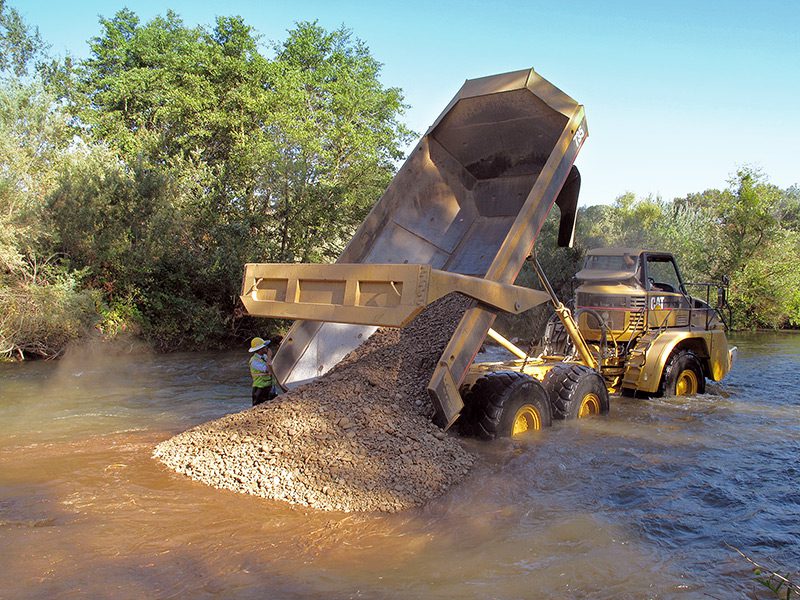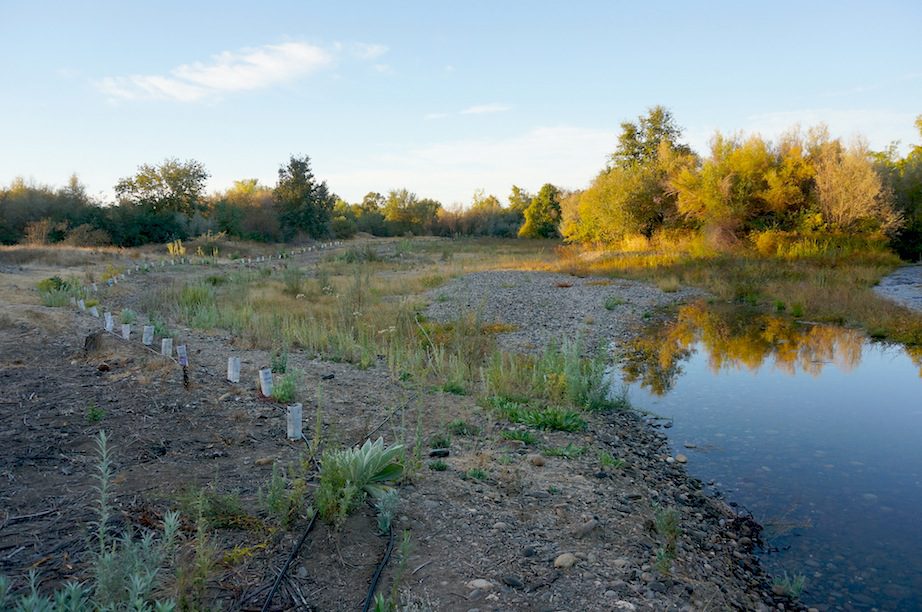


California’s lower Stanislaus River is crucial habitat for steelhead trout and fall-run Chinook salmon, but it lacks large stretches of silt-free gravel that the fishes need to spawn and their eggs need to develop. During the Gold Rush, dredges deposited vast quantities of gravel into large piles, forming in-stream islands like the Stanislaus River’s Honolulu Bar. To address this issue, FISHBIO worked with the Oakdale Irrigation District, the U.S. Fish and Wildlife Service, CBEC, and River Partners to design and implement a floodplain restoration project on the Stanislaus River at Honolulu Bar.

The main project goal was to level the island’s steeply sloped banks into a floodplain that typical spring flows can inundate, thereby producing 2.4 acres of salmon and steelhead rearing habitat. We also relocated gravel from the island to the river channel to replenish spawning beds, removed invasive vegetation along the river, and planted native riparian species. These plants will help shade the river, stabilize the bank, filter sediments, and provide habitat for the insects that young salmonids eat.